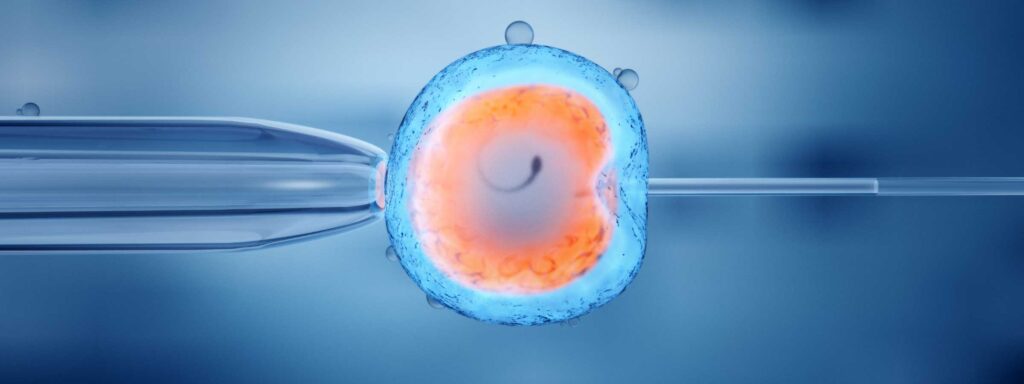Fertility & IVF
In 1978, the first test tube baby Louisa Brown was born in London, revolutionising infertility technology. By 2012 over 5 million IVF babies were recorded and the procedure is getting more and more popular with approximately 2% of children in Europe now conceived using IVF technology.

Natural Events
Under normal circumstances, women produce an egg which is captured by the Fallopian Tube where it meets the sperm.
Fertilisation occurs in the tube and within 2 – 3 days the fertilised egg (zygote) enters the uterine (womb) cavity. In natural conditions, this zygote implants in the lining of the womb (endometrium), preparing an opportunity of pregnancy.
In infertile couples these events cannot occur for varying reasons.
IVF Cycle
In vitro fertilisation procedures mimic these natural events. Women are received hormonal injections to increase their number of available eggs. The eggs are monitored closely by ultrasound and when they reach to 18 – 20 mm in size they are triggered by an HCG hormone injection to complete maturity.
Meanwhile the male partner gives sperm. IVF is used when the sperm is normal in concentration, motility and morphology. Sperm is evaluated and the most mobile and natural specimen is used for the procedure. Approximately 300,000 sperm cells are mixed with one egg in a drop of insemination medium and incubated until the next day. The sperm cells are left to penetrate the outer membrane of the egg on their own in order to fertilise the egg. Fertilisation is determined 17 – 19 hours after insemination.
In normal circumstances with a good sperm count, approximately 70 – 80% percent of the eggs are fertilised. The eggs continue to divide for three continuing days. The healthiest three embryos are transferred in the women’s uterus by plastic catheter. Performed under careful ultrasound guidance in which the uterus is seen easily, the embryos are transferred exactly 2 cm below the top of the cavity, providing the best pregnancy chance. A pregnancy test is performed 12 days later.
Treatment Options
There are several possible IVF treatment scenarios in North Cyprus:
- Your own eggs and your partner’s sperm;
- Your eggs and donor sperm;
- Your eggs, donor eggs and your partner’s sperm;
- Donor eggs and your partner’s sperm;
- Donor eggs and donor sperm;
- Donated embryos.
You may also be interested in:
How are pregnancy success rates increased with IVF?
The ICSI Procedure
Embryo Freezing
Blastocyst Transfer
How do Professionals approach an Infertile Couple?

Contact Health NCY and we will provide a more comprehensive breakdown of the options available to you in North Cyprus.

